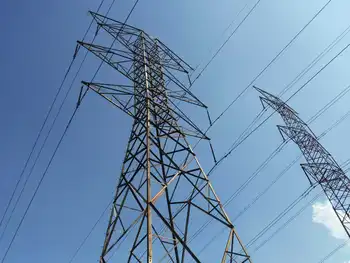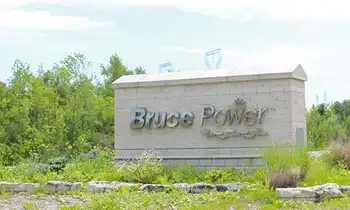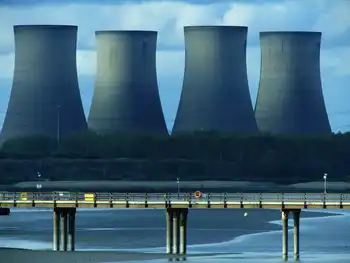Far North mulls nuclear power option
By CBC News
NFPA 70b Training - Electrical Maintenance
Our customized live online or in‑person group training can be delivered to your staff at your location.

- Live Online
- 12 hours Instructor-led
- Group Training Available
The reactor disaster in Japan has cast a pall over atomic energy, but some are still mulling whether new, smaller and safer nuclear reactors might be the answer to northern Canada's power needs.
The energy situation in Nunavut is certainly challenging: the territory's energy provider, Qulliq Energy Corp. QEC, expects a net loss of $8.5 million against its total revenue of $89.7 million in its operating budget for the 2010-2011 fiscal year. This past October the company had projected the budget shortfall could be as high as $22.7 million, and called for a 19.3 per cent rate hike across the board.
It underlined the fact that while diesel may be convenient to use in the short term for generating electricity, QEC's board sees its long-term potential for Nunavut waning.
"Between the fluctuation in global petroleum prices and the global recession of 2008, the Board believes more so now than ever that Nunavut needs to reduce our dependence on diesel fuel, and agrees with the Government of Nunavut's desire to advance capital projects which provide alternatives to fossil fuel consumption," QEC board of directors chair Simon Merkosak wrote in the company's 2010-2011 corporate plan.
QEC operates 27 diesel plants throughout Nunavut. Energy costs have risen to about $1 per kilowatt hour in remote communities like Kimmirut and close to 50 cents per kWh in the capital of Nunavut, according to a 2010 QEC report.
These are breathtaking numbers compared to averages of about 8.5 cents per kWh in cities like Calgary or Toronto, and a testament to the challenges of powering such remote communities in cold climates.
Adding to the troubles, the territorial government has not extended a $500 homeowner fuel rebate into 2011. That means northern consumers used to crucial energy subsidies are likely to take a big hit this year, and the pressure for more affordable sources of electricity is expected to increase.
While wind, solar and hydroelectric power are all being considered as alternatives to diesel, another alternative is small-scale nuclear power. QEC president and CEO Peter Mackey says it has been on Nunavut's radar for several years and companies pursuing possible designs have made plays for the territory's energy market.
"We've certainly been approached by different parties and groups that are in the regulation process to get mini-nuclear reactors approved in Canada. It's something that has a huge process to go through before we could consider it, but if what the proponents say about mini-nuclear is true we would certainly be interested in it, if the technology was there and the safety was there," Mackey said.
A lot of money could be on the line: Mackey said a recent proposal for a hydro-electric power plant in Iqaluit was estimated to cost $200 to $500 million over the next 40 years, while some competing micro-nuclear designs pitched to QEC have promised to meet the same energy needs for $15 million over the same period.
Of course, with no operational history to draw on, the numbers put out by the micro-nuclear industry are likely to be best-case scenarios. But it's easy to see why they are enticing, even in light of the nuclear plant disaster in Japan.
There are nuclear designs that have been in development since the 1980s for miniature reactors that could produce a fraction of the power of their larger cousins. Experts say they are not only economical, but also much safer than conventional designs — although no one has taken the steps to build one yet.
While traditional nuclear plants produce upwards of 1,000 megawatts of electrical power, far too much for a small community to use economically, smaller designs in the 10 MW range could power larger, off-grid towns effectively and with purportedly few of the traditional dangers associated with larger reactors.
"The smaller the reactors are, the easier it is to make them inherently safe because your power densities are much lower and the cooling temperatures involved are much lower," said Dr. Jeremy Whitlock, a reactor physicist at Chalk River Laboratories and former president of the Canadian Nuclear Society. "These are power plants you don't need a nuclear PhD to run."
If miniature reactor designs live up to safety standards and can be shown to make sense financially, Mackey says QEC could potentially see such reactors gradually replace diesel generators.
"Mini-nuclear, if all the hurdles were passed and if it could be proven to be safe, reliable, environmentally friendly and cost-effective, is something that would be beneficial. We could potentially place reactors in any of our 25 communities. It's something we would certainly have an interest in," Mackey said.
New nuclear fears underscored by recent problems at the Fukushima reactor complex in Japan certainly aren't likely to expedite adoption of new nuclear technology. Production-cost uncertainties are also a major obstacle. But the potential is there for the adoption of small-scale reactors, experts say.
Peter Lang, a co-chair of education and communications at the Canadian Nuclear Society, says compared to diesel, nuclear fuel is still relatively cheap and its costs are more stable. Modern small-scale nuclear designs also focus on permanently closed, modular units that would never have to be opened to risk exposing the core — they could essentially be plunked down, run for years and then the whole module would get replaced much like a battery.
Such designs should ultimately be able to operate safely, even unattended, with only occasional remote monitoring, Lang said.
The idea is not wholly theoretical. Small nuclear reactors already exist in Canada, with a half-dozen Canadian-built SLOWPOKE reactors currently in use by Canadian schools such as the University of Alberta for research purposes.
Built in the 1970s by Atomic Energy of Canada Ltd. AECL, the shoebox-sized SLOWPOKE reactors are only powerful enough to heat a bathtub full of water 20 KW. AECL did try to develop a more powerful version in the 1980s meant for district heating, but it failed to catch on when natural gas prices dropped.
As fossil fuel prices have risen in recent years, there has been renewed interest in micro-nuclear power. Toshiba has been developing a 10-megawatt reactor called the 4S, and since 2004 has been trying to put a prototype to work in the city of Galena, Alaska. It has the blessing of the city, but regulation and licensing has proven to be a long and costly process with no end in sight. In general, the U.S. Nuclear Regulatory Commission has also had a lukewarm response to the proposal of putting a new, prototype reactor on U.S. soil.
Companies like Hyperion Power Generation, Babcock & Wilcox and NuScale Power Inc. in the U.S. are also working on competing designs, but appear no closer than Toshiba to having a licensed, working prototype.
Given the time and investment required to license and build a nuclear plant, even a small one, discussion and planning would have to start soon if territories like Nunavut want to down a nuclear path within the next decade or so. Yet the many unknowns make the choice a tough one, even for power-starved communities.
While advocates of the technology, such as Lang, theorize small reactors should be able to produce power in a cost range between six and 30 cents per kWh, these numbers are impossible to be certain of until a working reactor is put into operation.
Critics point out that since the purpose of small nuclear reactors would be to lower energy costs, the fact that those costs are not clear enough makes it impossible to make a fair comparison against conventional power sources.
"I'm a bit skeptical about small-scale nuclear reactors. I think ones that are more modest in scale are still way bigger than small communities could use and I would be surprised if nuclear energy proved attractive to them after all the costs are considered," said Donald Dewees, a professor of Economics and Law at the University of Toronto who studies the electricity industry in Canada.
The problem, Dewees says, is not whether or not the technology can be made to work, but rather whether the high capital costs and eventual prices per kWh of micro-nuclear power are likely to be competitive with other fuels at all.
"We don't know what the next generation of nuclear reactors is going to cost because there aren't very many being built. You really only know once someone gets serious and there's money on the line. After what's happened in Japan, the public is also likely to be more wary of nuclear power," Dewees said.
Mackey echoes that sentiment, citing recent controversy surrounding the Kiggavik Project, a proposed uranium mine near Baker Lake, as proof that nuclear power would still have to gain public acceptance in Nunavut.
"At this point there is huge opposition to a uranium mine in general, so I'd expect even greater opposition to a nuclear reactor," Mackey said.











